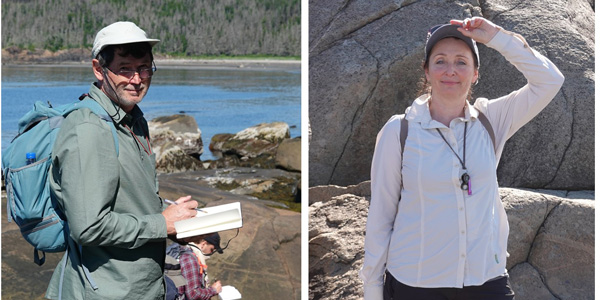Groundbreaking discovery from South Africa challenges the recent re-interpretation of magma chambers
- Wits University
Wits researchers have compelling evidence for the existence of a magma chamber deep within a South Africa’s ancient crust.

Professor Rais Latypov from the School of Geosciences at Wits University and his research team have found field evidence for the existence of a 5-km-thick totally molten chamber within the ancient crust of South Africa. This suggests that a super-large, entirely molten and long-lived magma chambers occur, at least, in deep geological time, and that the classical view of ‘big magma tanks’ remains relevant.
The classical petrological view that magma chambers occur as ‘big tanks’ has faced some doubt in recent years, owing to a lack of conclusive evidence from geophysical surveys. In addition, thermal modelling indicates that the formation of a large magma body within the upper crust is physically problematic. These studies have concluded that molten magma chambers are either transient or non-existent in the geological history of the Earth.
“Although, modern geophysical surveys are indeed unable to conclusively identify any present-day magma chambers with a large volume of eruptible melt, it is too early to discard the existence of such chambers in Earth’s crust. In our study we present the ground-truth observations indicating that one of these large and molten chambers existed in the ancient Earth's crust of South Africa” says Professor Latypov. Latypov and his team’s findings have been published as a paper in Scientific Reports.
Latypov asserts that the size of the resident melt column in the Bushveld chamber at one stage was “really staggering — over 5 km in thickness and over 380,000 km3 in volume. This amount of magma is several orders of magnitude larger than any known super-eruptions in the Earth’s history.” It is only comparable to the extrusive volume of some of the Earth’s large igneous provinces such as the Karoo flood basalts in South Africa.

Key evidence comes from the Bushveld Complex in which the temporary chamber floor was found to gradually rise through a 4-km-high sloping step. “Such development of magmatic layering implies that the resident melt column was thicker than the stepped relief of the chamber floor. This discovery is arguably the most fundamental constraint on the thickness of the resident melt column that has been ever derived from field mapping in fossilized magma chambers”, argues Dr. Sofya Chistyakova from Wits University.
It is quite conceivable that such magma chambers have developed throughout the entire Earth’s history. Even if some regions of the Earth’s crust are lacking such chambers, this does not automatically mean that ‘big tank’ magma chambers are absent from other regions.
“Since layered intrusions — such as the Bushveld Complex — are rare throughout geological time, it is not surprising that geophysicists cannot now detect active examples of large and molten magma chambers in Earth’s crust”, says Chistyakova.
*The article can be accessed freely on Scientific Reports'

